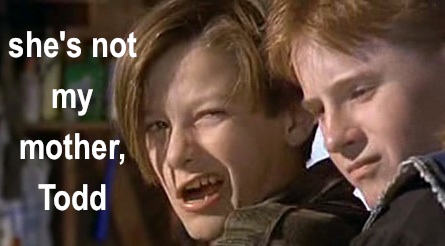 After leaving the cinema having watched Bela Tarr's new, and supposedly final, film The Turin Horse, one feels windswept and empty, a sick feeling gnawing at the bottom of your belly, your hair full of dead leaves and soil, bedraggled and thrown against your face. Throughout the film a steadicam drags after the young peasant woman and her father that are the films protagonists, as they battle the howling wind that screams around their dwelling like a banshee. Virtually every scene is made up of just one of these persistent takes, the world an uncultivated terrain in murky black and white, the same downbeat melancholy score for strings reoccurring through the film. Tarr's utterly unwavering, rigorous modus operandi, although a hard praxis to come up against for the viewer, is so complete in it's approach and so stunning in it's execution (the black and white imagery depicts the harshest of living conditions, coming across like the visual equivalent of some funeral dirge made from the very dirt, sweat and rock of everyday existence) that it can't help but captivate you, hold you in a vice-like grip.
After leaving the cinema having watched Bela Tarr's new, and supposedly final, film The Turin Horse, one feels windswept and empty, a sick feeling gnawing at the bottom of your belly, your hair full of dead leaves and soil, bedraggled and thrown against your face. Throughout the film a steadicam drags after the young peasant woman and her father that are the films protagonists, as they battle the howling wind that screams around their dwelling like a banshee. Virtually every scene is made up of just one of these persistent takes, the world an uncultivated terrain in murky black and white, the same downbeat melancholy score for strings reoccurring through the film. Tarr's utterly unwavering, rigorous modus operandi, although a hard praxis to come up against for the viewer, is so complete in it's approach and so stunning in it's execution (the black and white imagery depicts the harshest of living conditions, coming across like the visual equivalent of some funeral dirge made from the very dirt, sweat and rock of everyday existence) that it can't help but captivate you, hold you in a vice-like grip. Like his seven hour Satantango (1994) (written about here), The Turin Horse is barren of luxury. Every activity the characters carry out arises from the basic tug of survival: getting dressed, lighting fires, getting water, making food. The only respite seems to come when the half-literate girl begins to read, in faltering words, from a bible, the holy idealism contained within like some bleak joke on these two figures whose life offers no hope of change, no interval from hardship, possibly no love, and, by the end, no light. Family film, date movie? These boxes remain firmly un-ticked.
Like his seven hour Satantango (1994) (written about here), The Turin Horse is barren of luxury. Every activity the characters carry out arises from the basic tug of survival: getting dressed, lighting fires, getting water, making food. The only respite seems to come when the half-literate girl begins to read, in faltering words, from a bible, the holy idealism contained within like some bleak joke on these two figures whose life offers no hope of change, no interval from hardship, possibly no love, and, by the end, no light. Family film, date movie? These boxes remain firmly un-ticked.This is one of the most single-minded films I have ever seen. It's perseverance in forcing the audience to undergo this earnest monotony achieves an absolute purity. Someone once said the me about Lui Jiayin's Oxhide (2005) that one of the extraordinary things about it was that he could remember almost every single shot throughout it's duration (if you haven't seen Oxhide, read more about it here). In The Turin Horse I am fairly confident that I can recall every single event. Things do happen in this film, it's just they happen slooooow. And because of their spacing, when an event occurs, it hits home like a battering ram on a teacup.
There are certain films that serve you with such an unflagging certainty in their repetition of technique, that slowly bruise you from the inside with their purposefully similar mise-en-scene, that you can do little but give in - wide eye in reception. In Vanda's Room (2000) by Pedro Costa is another such film. For three hours you sit and watch, eyes and eyes firmly OPEN, as the Portuguese slum of Fontainhas is slowly demolished around its impoverished inhabitants, who shoot up, laugh, cough, chat, argue and vomit their way through the film's duration in shadowy, beautifully composed interiors filled with life. There are many more, the previously mentioned Oxhide being another, films that take us by the hand and then don't let us go until they say so; and they may be arduous and difficult, but they are films that have hewn themselves into granite, monoliths of duration and persistance and they deserve to be watched and remembered.




